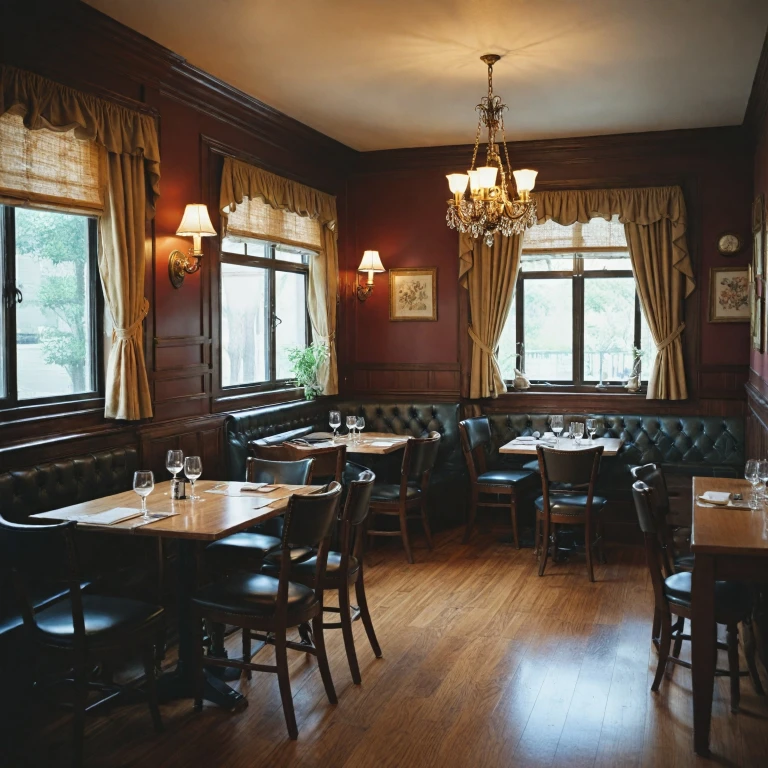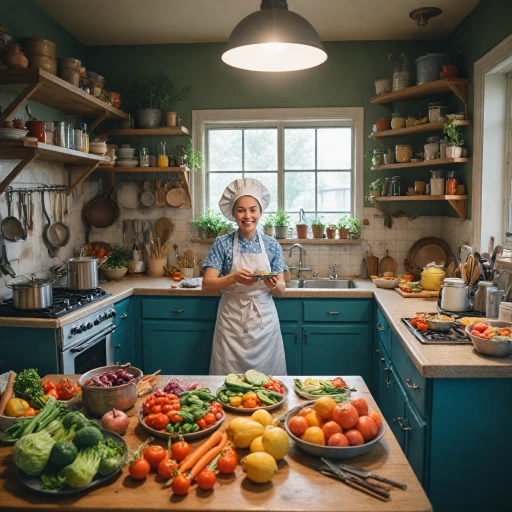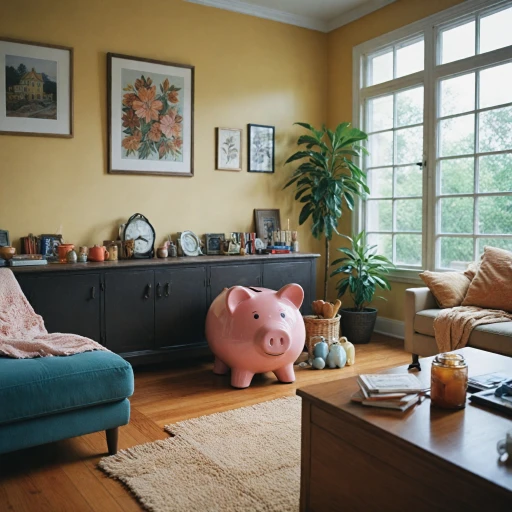
Understanding Your Restaurant's Needs
Assessing Your Establishment's Requirements
Picking the perfect restaurant furniture is a crucial decision that impacts not only the ambiance of your place but also the overall dining experience of your customers. Recognizing your restaurant's specific needs is the first step in this process. Understanding exactly what your commercial restaurant requires involves several key considerations:- Type of Cuisine and Dining Style: Is your establishment casual dining, fine dining, or a fast-casual eatery? The style of dining will influence the type of furniture you choose, from bar stools for a relaxed atmosphere to high-quality, solid wood tables for an upscale environment.
- Space and Layout: Evaluate the space available. Restaurant tables and dining chairs must fit comfortably without crowding, allowing for smooth operations.
- Customer Experience: Consider the dining experience you wish to offer. For a more intimate setting, restaurant booths might be suitable, whereas bar heights can promote a lively vibe.
- Functional Necessities: Depending on your location, are there specific requirements for outdoor furniture or commercial grade materials that can withstand heavy use?
Evaluating Quality and Durability
Assessing the Quality and Longevity of Restaurant Furniture
Selecting the right restaurant furniture isn't just about aesthetics; it significantly impacts the dining experience. It's crucial for restaurant owners to focus on the quality and durability of each piece, such as chairs, tables, and bar stools. Here's how you can make informed decisions in this appraisal process:
- Materials Matter: Choosing materials like solid wood for restaurant tables ensures durability. Solid wood offers a high-quality feel and withstands frequent use, which is essential in a bustling commercial restaurant environment.
- Commercial Grade Importance: Always check whether your restaurant furniture is commercial grade. This classification generally guarantees that the furniture can handle the rigorous demands of a business setting. It's particularly vital for high-traffic areas.
- Durability over Original Price: While the original price might be a concern, investing in high-quality furniture from the get-go can save money in the long run by minimizing replacements or repairs. Opt for equipment that can stand the test of time, which is easier if an equipment appraisal is done beforehand.
- Expert Appraisals for Informed Decisions: An equipment appraisal can help assess whether the dining tables, restaurant chair sets, and bar stools you're considering are truly worth their price tag based on durability and quality.
By paying close attention to these aspects during your selection process, you ensure the furniture not only complements the restaurant's aesthetic but also supports its operational requirements efficiently.
Investing in robust, quality restaurant furniture from reputable suppliers in the USA can ensure both aesthetic appeal and business longevity.
Balancing Cost and Value
Finding the Right Balance: Cost vs. Value
When selecting restaurant furniture and equipment, particularly chairs and tables, one of the most crucial aspects is balancing cost and value. While it's tempting to aim for the most affordable options to keep expenses low, this approach can sometimes lead to higher costs in the long run, especially if the furniture lacks durability or comfort. Therefore, making informed decisions between cost-effectiveness and high quality is essential for every restaurant owner.
First, consider the total costs involved. Retail price isn't the only factor; you should also assess the longevity of your furniture. Quality furniture may have a higher initial price, but solid wood chairs and bar stools, known for their durability, can resist wear and tear longer than cheaper alternatives. This means fewer replacements over time, reducing overall expenses.
In commercial settings, the use of commercial grade materials can make a significant difference in their lifespan. High quality furniture often includes reinforced features that withstand the demands of a busy dining environment. When doing these appraisals, it is beneficial to consider both the original price and the likely longevity of the equipment.
Additionally, identify pieces that complement your dining experience while aligning with your brand image. Furniture that reflects the restaurant's aesthetic can enhance patrons' overall experience, leading to more repeat business. A well-thought-out investment in tables, chairs, and booths that match your brand’s atmosphere may yield high returns.
Finally, don’t hesitate to negotiate with suppliers. Strong supplier relationships can aid in securing high quality furniture at a reasonable price. It also offers room for negotiating terms that can balance upfront costs against future savings in maintenance and replacements.
The process of evaluating the cost versus value of restaurant furniture involves careful deliberation and appraisal, often requiring advice from professionals or peers within the industry. Use this phase to ensure financial decisions born out of short-term savings don't compromise long-term success. Equip your commercial dining space with pieces that provide value across their lifespan and maintain a favorable customer experience.
Navigating Supplier Relationships
Building Strong Supplier Relationships
Developing effective relationships with suppliers is a crucial component when investing in restaurant furniture and equipment. Whether you are in need of dining tables, bar stools, or commercial-grade restaurant booths, establishing a solid connection with suppliers is essential. Here’s how to navigate these relationships effectively:- Evaluate Multiple Suppliers: Start by assessing various suppliers to compare the quality, price, and durability of the furniture they offer. Consider asking for an equipment appraisal to understand the original price versus the appraisal value. By analyzing multiple options, you'll increase your chances of finding the best deal for high-quality restaurant furniture that meets your business needs.
- Check Supplier Reputation: Investigate the reputation of potential suppliers. Look for reliable commercial restaurant suppliers in the USA known for delivering high-quality equipment. Past reviews from other restaurant owners can offer valuable insights into their experiences with suppliers.
- Negotiate for Better Terms: Once you've shortlisted potential suppliers, don't hesitate to negotiate. Ask about flexible payment terms, bulk order discounts, or loyalty programs as these could help reduce the overall cost over time. Suppliers are often willing to negotiate to secure your business, especially for large orders of tables, chairs, and other essential restaurant equipment.
- Understand Warranty and Aftercare: A good relationship with your supplier often includes post-sale support. Verify the warranty details and the aftercare services of the furniture restaurant suppliers provide. It’s crucial for maintaining your dining equipment, ensuring longevity under rigorous use, and saving on future repair costs.
- Assess Communication and Support: Strong communication is key to any successful supplier relationship. Ensure that the supplier is responsive and willing to provide regular updates throughout the process. Reliable support can help avoid delays and streamline the acquisition of necessary furniture for your restaurant.
Considering Aesthetic and Brand Alignment
Aligning Aesthetics with Your Brand and Customer Experience
Choosing the right restaurant furniture goes beyond just functionality and durability. It's important to consider how the aesthetic of your restaurant’s furniture aligns with your brand and enhances the dining experience of your customers. Here are a few essential points to keep in mind:- Brand Reflection: The furniture you choose should reflect the personality of your brand. Whether your business is a high-end dining establishment or a casual bar, the design, material, and finish of furniture like tables, chairs, and bar stools should communicate your restaurant's unique identity.
- Color and Material Harmony: For a cohesive look, consider using materials such as solid wood or commercial-grade metals that complement the interior design of your establishment. For instance, a rustic-themed restaurant might benefit from the earthy tones and textures of reclaimed wood tables and chairs.
- Customer Comfort and Style: High-quality furniture can significantly enhance the ambience of your restaurant while serving practical purposes. For example, plush dining booths can provide a comfortable experience, while bar-height stools can create a vibrant, dynamic atmosphere.
- Considering Different Dining Areas: Depending on the layout of your restaurant, you might need different styles of furniture for different areas. For instance, a formal dining area might require elegant dining tables and upholstered chairs, while a more casual zone could benefit from durable bar tables and chairs.
- Feedback and Adaptation: Engage in continuous appraisal of your furniture's impact on customer satisfaction. This might involve tracking feedback or conducting periodic equipment appraisals to ensure your furniture remains in line with customer preferences and brand standards.
Staying Compliant with Regulations
Ensuring Compliance with Regulations
When selecting restaurant furniture and equipment, understanding and adhering to regulatory standards is crucial for any business. This forms an integral step in the purchasing process alongside evaluating quality and balancing cost. Adhering to these regulations not only ensures that your restaurant remains in good standing but also influences the functionality, safety, and longevity of your dining area. Here are some key considerations to keep in mind:- Local Codes and Standards: Every region has specific requirements regarding restaurant layout, materials, and safety standards that need to be followed. This is especially relevant when choosing commercial grade tables and chairs, ensuring they meet the local fire codes and seating capacities.
- Furniture Height and Accessibility: You'll need to ensure your furniture, including bar stools and dining tables, accommodates all customers. For instance, bar height furniture can provide a trendy atmosphere but must be accessible under the Americans with Disabilities Act (ADA) regulations in the USA.
- Material Safety and Durability: Using high-quality, solid wood or other materials that are non-toxic and easy to clean is critical for maintaining hygiene standards. Materials should be durable and commercial grade, withstanding high traffic within restaurant settings.
- Insurance Considerations: It's important to understand how furniture choices impact your insurance coverage. High-quality and well-maintained equipment may lower insurance premiums compared to lower quality options prone to quicker wear and tear.


